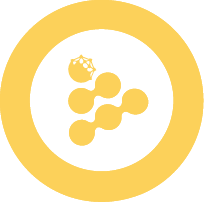🛠️ Build and Deploy your First iApp
Reading time 🕒 10 min
Time to build!
Let's build an iApp that can process protected data in a secure environment using the iExec iApp generator tool. This tool helps you create, test and deploy iApp with just a few commands.
If you wanna explore and deep dive in the CLI. You can check the iApp-CLI github repository. Follow the instructions carefully for a smooth development experience.
📋 Prerequisites
Before getting started, make sure you have:
Don't worry! All secrets used in this tutorial stay on your machine and aren’t shared with anyone. You’ll only need them to run the iapp run command.
🚀 Types of iApp you Can Build
iExec enables you to build various types of Privacy-preserving applications. Here are some popular use cases:
📧 Web3 Mail
Send privacy-preserving emails to registered Ethereum account holders without knowing or storing their email addresses. Github | Documentation
💬 Web3 Telegram
Send privacy-preserving Telegram messages without knowing or storing their Telegram handles. Github | Documentation
🌐 Content Delivery
Transfer, sell or rent protected content to authorized users. Github | Documentation
These are just a few examples, the possibilities are endless. Want to explore iApp Generator? Check out our documentation and see what you can build!
💾 Installation (Win / Mac / Linux)
First, you need to install the iapp package. Open your terminal and run:
npm i -g @iexec/iappyarn global add @iexec/iapppnpm add -g @iexec/iappbun add -g @iexec/iappYou can check if the installation was successful by running:
#checking the version
iapp --version
#checking the available commands
iapp --help🛠️ Bootstrap your iApp
To initialize the working directory for developing your iApp, use the iapp init command. This command sets up the necessary project structure and files.
mkdir iexec-test
cd iexec-test
iapp initYou will be prompted with the following message:
_ _
(_) / \ _ __ _ __
| | / _ \ | '_ \| '_ \
| |/ ___ \| |_) | |_) |
|_/_/ \_\ .__/| .__/
|_| |_| We recommend selecting "Hello World" to quickly discover how iApp works! use advanced only if you are familiar with iExec.
- An iApp project is setup with the selected language
- An ethereum wallet has been created (we use it to sign the iApp creation onchain)
- A new folder has been created, it contains a very simple application, with the main code being located in
src/app.jsorsrc/app.py
🧪 Test your iApp
To test your iApp, run the iapp test command. This will build a Docker image and run your application locally to simulate the TEE environment. You'll see the following steps:
The iapp test command uses your local Docker to build and execute the app, simulating how it will run in the iExec network's TEE environment.
Common Issues:
- If you get
Error: Docker daemon is not accessible: Make sure Docker is installed and running. - if you get
Error: Failed to locate iApp project root: Ensure you are in your project folder before proceeding.
🧩 Using Arguments
You can pass arguments to your iApp using the --args option. This allows you to provide necessary inputs during runtime (you can use your name for example).
iapp test --args your-name🔒 Using Protected Data
You can pass a protectedData that you are authorized to process to your iApp using the --protectedData option.
Since nothing is actually deployed during testing, we use Protected Data mocks to test the app. Using --protectedData default will provide your app with the default protectedData mock.
iapp test --protectedData defaultYou can check how args and protectedData are processed in src/app.js or src/app.py
🚀 Deploy your iApp
Deploy your iApp on the iExec protocol.
Once you have your token, you can deploy your iApp.
____ _
| _ \ ___ _ __ | | ___ _ _
| | | |/ _ \ '_ \| |/ _ \| | | |
| |_| | __/ |_) | | (_) | |_| |
|____/ \___| .__/|_|\___/ \__, |
|_| |___/ 📝 Make sure to save your iApp address after deployment - you'll need it later!
You can find your iApp address in the iexec-app.json file in your project folder.
⚠️ If you encounter issues during deployment, make sure the Docker BuildKit feature is enabled and supports AMD64 architecture:
docker buildx inspect --bootstrap | grep -i platformsThe output should include linux/amd64 in the list of supported platforms. If not, update to the latest Docker Desktop version which includes these requirements.
If you set the wrong Docker username, you can change it by editing the iapp.config.json file
🏃 Run your iApp
Now you can run your application:
iapp run <my-iapp-address>To sum up the process, we take the iApp and wrap it in the iExec framework, allowing it to run securely in a Trusted Execution Environment (TEE) for confidential computing. If you want to explore further, you can check the protocol documentation here.
🎉 Congratulations! You've successfully deployed and run your first iApp on iExec. This is a significant milestone - your application is now ready to securely process confidential data in a trusted environment.
🎯 Key Takeaways
- 🔒 iApp: Special applications that run in TEEs to process protected data
- 🛠️ iApp CLI: Command-line tool for building, testing, and deploying iApp
- 🔐 Protected Data: Can be integrated and processed securely in your iApp
- ⛓️ Deployment: Apps are deployed on iExec protocol to run in trusted environments
Next up: Alice will learn how to authorize the iApp and Bob to access and use her protected data! 🚀
